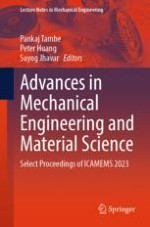2024 | OriginalPaper | Buchkapitel
Performance Analysis of Orthopedic Screw Used for Fixation of Fracture of Bone
verfasst von : Sushama Agarwalla, Deepak Kumar Agarwalla
Erschienen in: Advances in Mechanical Engineering and Material Science
Verlag: Springer Nature Singapore
Aktivieren Sie unsere intelligente Suche, um passende Fachinhalte oder Patente zu finden.
Wählen Sie Textabschnitte aus um mit Künstlicher Intelligenz passenden Patente zu finden. powered by
Markieren Sie Textabschnitte, um KI-gestützt weitere passende Inhalte zu finden. powered by
